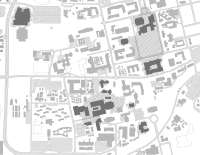Tired of Wires? Got the Itch to Unhitch? Welcome to Our Wireless Campus
- The Activities and Recreation Center (ARC)
- Bainer Hall
- Engineering III
- Freeborn Hall
- Health Sciences Library
- Kemper Hall
- King Law School
- Medical Sciences Cafe
- Physical Sciences Library
- Silo
As before, wireless service is available in the following areas:
- Memorial Union (MU)
- Quad
- Shields Library
- Shields Extended Hours Reading Room
- Wellman Hall (partial coverage)
No longer do you have to search for a computer room between meetings or an Internet connection for your laptop! Simply set up your laptop for wireless, and in no time you'll be working while watching the crowds go by or enjoying the sun on the Q uad.
Still not sure if wireless Internet is a service you would be interested in using? Here are some suggestions you might consider:
- Host extra office hours at the MU or Silo during the pre-final grind.
- Spread out a blanket on the Quad, bring some picnic munchies, and enjoy the fresh air as you finish your projects.
- Invite your students to use wireless in the classroom by structuring online practice exams, offering quizzes you have prepared in MyUCDavis, or having students answer polls and questionnaires to help you gauge how well they're grasping course information.
- Have students participate in online draft workshops by exchanging papers via email, correcting them using Microsoft Word's "Track Changes" tool, and forwarding you copies of their progress.
As you join the world of wireless, there are a few things you should be aware of:
- Much like cellular phone service, wireless connection speeds vary with your proximity to the base-station and the number of users on the network; as a result, you might occasionally experience slower service. As wireless expands, service will continue to improve.
- Wireless connections are not always secure; therefore, you shouldn't send credit card numbers or passwords over unencrypted connections. Secure services that use encryption (like MyUCDavis or SISWEB) are, however, still safe to use.
Proposed improvements for campus wireless networking include a new management system, a more secure login mechanism, and an upgrade to the current infrastructure with a new wireless authentication server. The IET wireless proposal is viewable at cr.ucdavis.edu/UCDavisWirelessInfrastructureProposal.pdf. Comments on the proposal may be submitted to Mark Red ican (mredican@ucdavis.edu) through mid-January. More general information on campus wireless networking can be found at wireless.ucdavis.edu.
Convinced that wireless is the way to go? Check out our 4-step wireless primer.

